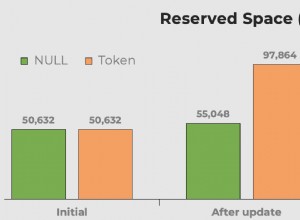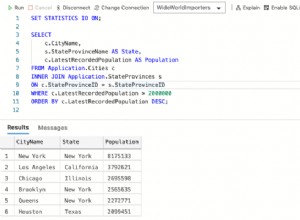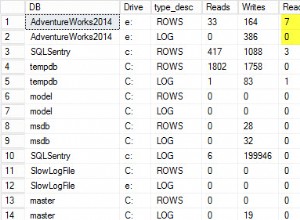Mi DBMS principal es Teradata, pero también funcionará como está en Oracle.
WITH all_meas AS
( -- get a distinct list of all from/to points
SELECT road_id, from_meas AS meas
FROM road_events
UNION
SELECT road_id, to_meas
FROM road_events
)
-- select * from all_meas order by 1,2
, all_ranges AS
( -- create from/to ranges
SELECT road_id, meas AS from_meas
,Lead(meas)
Over (PARTITION BY road_id
ORDER BY meas) AS to_meas
FROM all_meas
)
-- SELECT * from all_ranges order by 1,2
, all_event_ranges AS
( -- now match the ranges to the event ranges
SELECT
ar.*
,re.event_id
,re.year
,re.total_road_length
,ar.to_meas - ar.from_meas AS event_length
-- used to filter the latest event as multiple events might cover the same range
,Row_Number()
Over (PARTITION BY ar.road_id, ar.from_meas
ORDER BY year DESC) AS rn
FROM all_ranges ar
JOIN road_events re
ON ar.road_id = re.road_id
AND ar.from_meas < re.to_meas
AND ar.to_meas > re.from_meas
WHERE ar.to_meas IS NOT NULL
)
SELECT event_id, road_id, year, total_road_length, Sum(event_length)
FROM all_event_ranges
WHERE rn = 1 -- latest year only
GROUP BY event_id, road_id, year, total_road_length
ORDER BY road_id, year DESC;
Si necesita devolver el from/to_meas cubierto real (como en su pregunta antes de editar), podría ser más complicado. La primera parte es la misma, pero sin agregación, la consulta puede devolver filas adyacentes con el mismo event_id (por ejemplo, para el evento 3:0-1 y 1-25):
SELECT * FROM all_event_ranges
WHERE rn = 1
ORDER BY road_id, from_meas;
Si desea fusionar filas adyacentes, necesita dos pasos más (usando un enfoque estándar, marque la primera fila de un grupo y calcule un número de grupo):
WITH all_meas AS
(
SELECT road_id, from_meas AS meas
FROM road_events
UNION
SELECT road_id, to_meas
FROM road_events
)
-- select * from all_meas order by 1,2
, all_ranges AS
(
SELECT road_id, meas AS from_meas
,Lead(meas)
Over (PARTITION BY road_id
ORDER BY meas) AS to_meas
FROM all_meas
)
-- SELECT * from all_ranges order by 1,2
, all_event_ranges AS
(
SELECT
ar.*
,re.event_id
,re.year
,re.total_road_length
,ar.to_meas - ar.from_meas AS event_length
,Row_Number()
Over (PARTITION BY ar.road_id, ar.from_meas
ORDER BY year DESC) AS rn
FROM all_ranges ar
JOIN road_events re
ON ar.road_id = re.road_id
AND ar.from_meas < re.to_meas
AND ar.to_meas > re.from_meas
WHERE ar.to_meas IS NOT NULL
)
-- SELECT * FROM all_event_ranges WHERE rn = 1 ORDER BY road_id, from_meas
, adjacent_events AS
( -- assign 1 to the 1st row of an event
SELECT t.*
,CASE WHEN Lag(event_id)
Over(PARTITION BY road_id
ORDER BY from_meas) = event_id
THEN 0
ELSE 1
END AS flag
FROM all_event_ranges t
WHERE rn = 1
)
-- SELECT * FROM adjacent_events ORDER BY road_id, from_meas
, grouped_events AS
( -- assign a groupnumber to adjacent rows using a Cumulative Sum over 0/1
SELECT t.*
,Sum(flag)
Over (PARTITION BY road_id
ORDER BY from_meas
ROWS Unbounded Preceding) AS grp
FROM adjacent_events t
)
-- SELECT * FROM grouped_events ORDER BY road_id, from_meas
SELECT event_id, road_id, year, Min(from_meas), Max(to_meas), total_road_length, Sum(event_length)
FROM grouped_events
GROUP BY event_id, road_id, grp, year, total_road_length
ORDER BY 2, Min(from_meas);
Editar:
Ups, acabo de encontrar un blog Superposición de rangos con prioridad haciendo exactamente lo mismo con alguna sintaxis simplificada de Oracle. De hecho, traduje mi consulta de otra sintaxis simplificada en Teradata a Standard/Oracle SQL :-)




